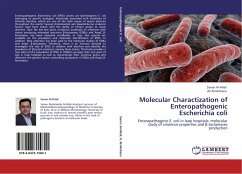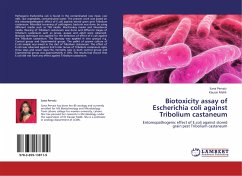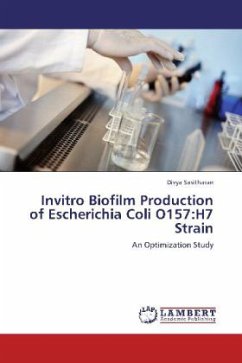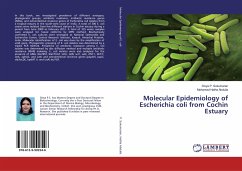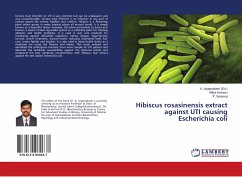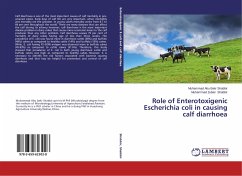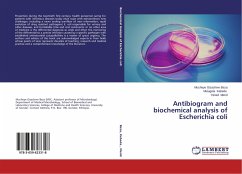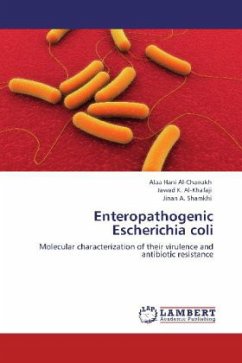
Enteropathogenic Escherichia coli
Molecular characterization of their virulence and antibiotic resistance
Versandkostenfrei!
Versandfertig in 6-10 Tagen
32,99 €
inkl. MwSt.

PAYBACK Punkte
16 °P sammeln!
Infantile diarrhea is one of the important illnesses with high morbidity and mortality in children. It is caused by a wide range of microbial agents including viruses, bacteria and parasites. Among the bacterial pathogens, is enteropathogenic E. coli (EPEC). The central mechanism of EPEC pathogenesis is a lesion called 'attaching and effacing' (A/E), which is characterized by adherence of bacteria to the intestinal epithelium. The eae gene, which is located in the 'locus of enterocyte effacement' (LEE) pathogenecity island, and the bfpA gene, located on a plasmid called the EPEC adherence fact...
Infantile diarrhea is one of the important illnesses with high morbidity and mortality in children. It is caused by a wide range of microbial agents including viruses, bacteria and parasites. Among the bacterial pathogens, is enteropathogenic E. coli (EPEC). The central mechanism of EPEC pathogenesis is a lesion called 'attaching and effacing' (A/E), which is characterized by adherence of bacteria to the intestinal epithelium. The eae gene, which is located in the 'locus of enterocyte effacement' (LEE) pathogenecity island, and the bfpA gene, located on a plasmid called the EPEC adherence factor (EAF), have both been used for identification of EPEC and for subdivision of this group of bacteria into typical and typical strains. In Iraq, so far little information are available on prevalence, molecular identification, nor serotyping and categorization of EPEC associated with nfantile diarrhea. This book provides a new data on prevalence, serotyping, and Molecular characterization ofvirulence and antibiotic resistance genes of EPIC in Iraq.



